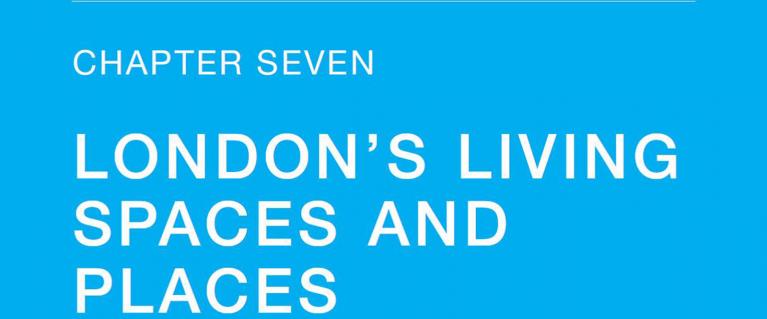
Policy 7.2 An inclusive environment
Policy
Strategic
A The Mayor will require all new development in London to achieve the highest standards of accessible and inclusive design and supports the principles of inclusive design which seek to ensure that developments:
a can be used safely, easily and with dignity by all regardless of disability, age, gender, ethnicity or economic circumstances
b are convenient and welcoming with no disabling barriers, so everyone can use them independently without undue effort, separation or special treatment
c are flexible and responsive taking account of what different people say they need and want, so people can use them in different ways
d are realistic, offering more than one solution to help balance everyone’s needs, recognising that one solution may not work for all.
B The Mayor will assist boroughs and other agencies in implementing accessible and inclusive design in all development proposals by updating the advice and guidance in the Supplementary Planning Guidance ‘Accessible London: Achieving an inclusive environment’; by continuing to contribute to the development of national technical access standards and by supporting training and professional development programmes.
Planning decisions
C Design and access statements submitted with development proposals should explain how, following engagement with relevant user groups, the principles of inclusive design, including the specific needs of older and disabled people, have been integrated into the proposed development, whether relevant best practice standards such as British Standard BS 8300:2009 + A1:2010 have been complied with, and how inclusion will be maintained and managed.
LDF preparation
D Boroughs should develop detailed policies and proposals in consultation with user groups that ensure the physical environment can meet the highest standards of accessibility and inclusion and that the principles of inclusive design are adopted at the earliest stages of the development process including when drawing up masterplans, area planning frameworks and development briefs.
Supporting text
7.7 This policy seeks to achieve the highest standards of accessible[1] and inclusive design[2], in all new developments in London[3]. Inclusive design is a process to ensure the diverse needs of all Londoners are integrated into development proposals from the outset[4]. This is key to ensuring that the built environment is safe, accessible and convenient and enables everyone to access jobs, opportunities and facilities. It is fundamental to improving the quality of life for all Londoners particularly for disabled and older people who, despite progress in building a more accessible city in the last decade, still experience considerable barriers to living independent and dignified lives as a result of the way the built environment is designed, built and managed.
7.8 In their design and access statements, applicants for planning permission should demonstrate their commitment to achieving high quality inclusive design, how their proposals ensure an accessible environment, how they have engaged with users (including for example organisations of disabled and older people) and the processes used to achieve these. Examples of good practice include the Olympic Delivery Authority’s Inclusive Design Strategy and Standards and Stratford City Consultative Access Group. The outcome should be places where people want to live and feel they belong, which are accessible and welcoming to everyone.
7.9 Advice on developing and implementing effective inclusive design strategies, on an inclusive development process and on technical inclusive access standards is available in CABE’s Principles of Inclusive Design, in the London Development Agency’s Inclusive Design Toolkit and in the GLA’s Supplementary Planning Guidance Accessible London: achieving an inclusive environment.
[1] British Standards Institution, BS 8300, Design of buildings and their approaches to meet the needs of disabled people – Code of practice. March 2009
[2] Commission for Architecture and the Built Environment (CABE), The principles of inclusive design (They include you), 2006
[3] NPPF 2012 op cit, para 57
[4] London Development Agency (LDA), Inclusive Design Toolkit, 2009
Need a document on this page in an accessible format?
If you use assistive technology (such as a screen reader) and need a version of a PDF or other document on this page in a more accessible format, please get in touch via our online form and tell us which format you need.
It will also help us if you tell us which assistive technology you use. We’ll consider your request and get back to you in 5 working days.